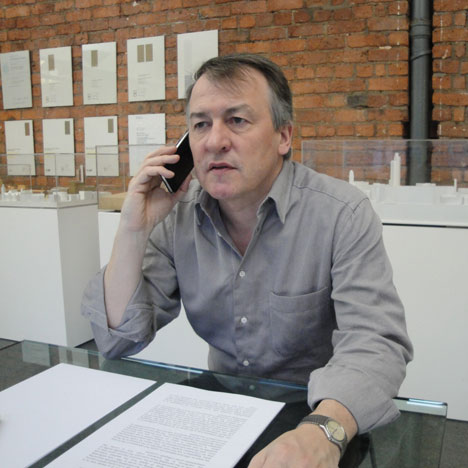Dezeen Wire: the Royal Institute of British Architects has announced that architect Stephen Hodder of Manchester firm Hodder+Partners will be the organisation's next president, after running for the position unopposed.
Hodder will succeed current President Angela Brady and will hold the position for two years from 2013-2015.
Here's some more information from the RIBA:
Stephen Hodder to be next President of the RIBA
Stephen Hodder has been confirmed as the next President of the Royal Institute of British Architects (RIBA). Stephen will become President Elect on 1 September 2012 and will take over the two-year elected presidency from Angela Brady on 1 September 2013.
Stephen will be the 75th RIBA President, a position previously held by significant architects Sir G. Gilbert Scott and Sir Basil Spence among others.
Stephen Hodder MBE is director of Hodder + Partners, an award-winning architecture practice based in Manchester. Hodder + Partners has won over thirty major awards including the most important prize in architecture: the inaugural RIBA Stirling Prize in 1996 for the Centenary Building at the University of Salford. Stephen is currently RIBA Vice-President for Nations and Regions and Design Review Panel member for both CABE and Places Matter! He has written and lectured widely, been visiting examiner at a number of schools of architecture and assessor of numerous architectural competitions and awards.
Speaking today Stephen Hodder said: “I am extremely pleased to be confirmed as President Elect of the RIBA. The RIBA is an ambitious organisation with a clear focus on its strategic priorities for the next five years and I look forward to helping to deliver an ambitious programme of work to support our members and encourage the wider public to greater appreciate the social and economic benefits good architecture can bring.
“As RIBA President, I will bring continuity to the great work already being delivered, from procurement reform to campaigning and cultural programming. I am particularly keen that we do more to promote the importance of collaboration between client, design and delivery teams – an essential partnership that can lead to more successful architecture. Even faced with challenging times, we can achieve so much.”

